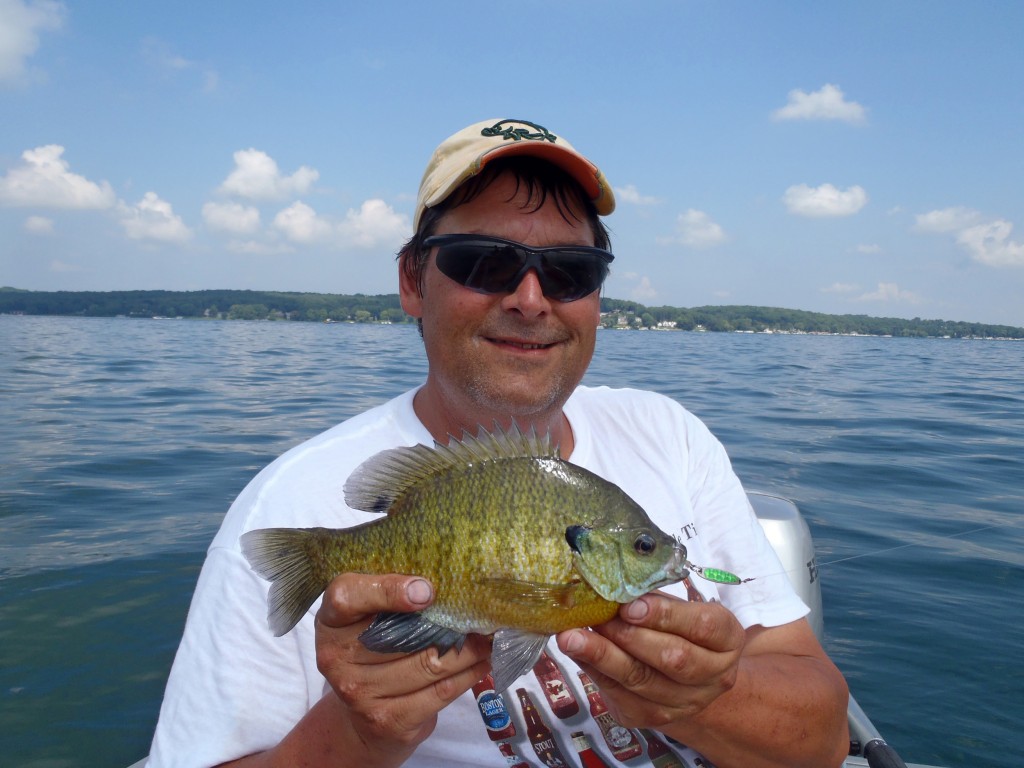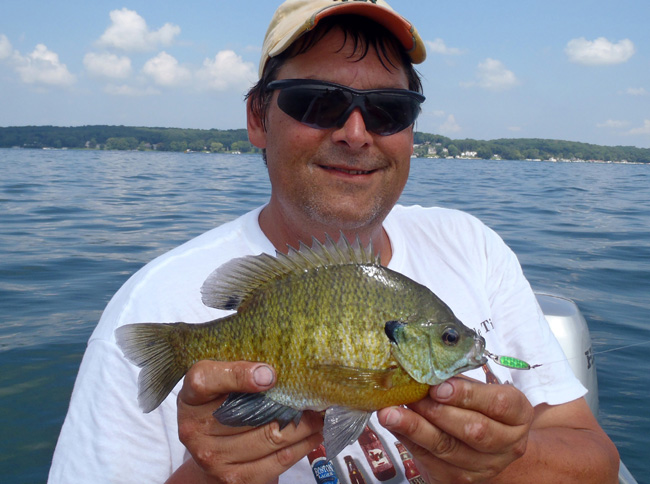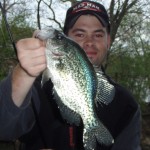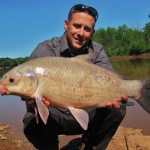By: Bill Modica – Date Posted: May 11, 2012
It was a warm sunny afternoon back in the summer of 1997. The morning bluegill bite had ended hours before, and my traditional offerings of small jigs tipped with bits of night crawlers that had worked so well for me earlier in the day, was now drawing a blank. In hopes of catching more fish, I decided to sift through a small and somewhat unorganized tackle box looking for the answer…..and there it was. A small tarnished old spoon with the hook nearly rusted off. Well after a quick tune-up and hook replacement, I dressed the new hook with an old tattered grub body……The madness that ensued shortly thereafter, has forever changed the way I fish for bluegills.
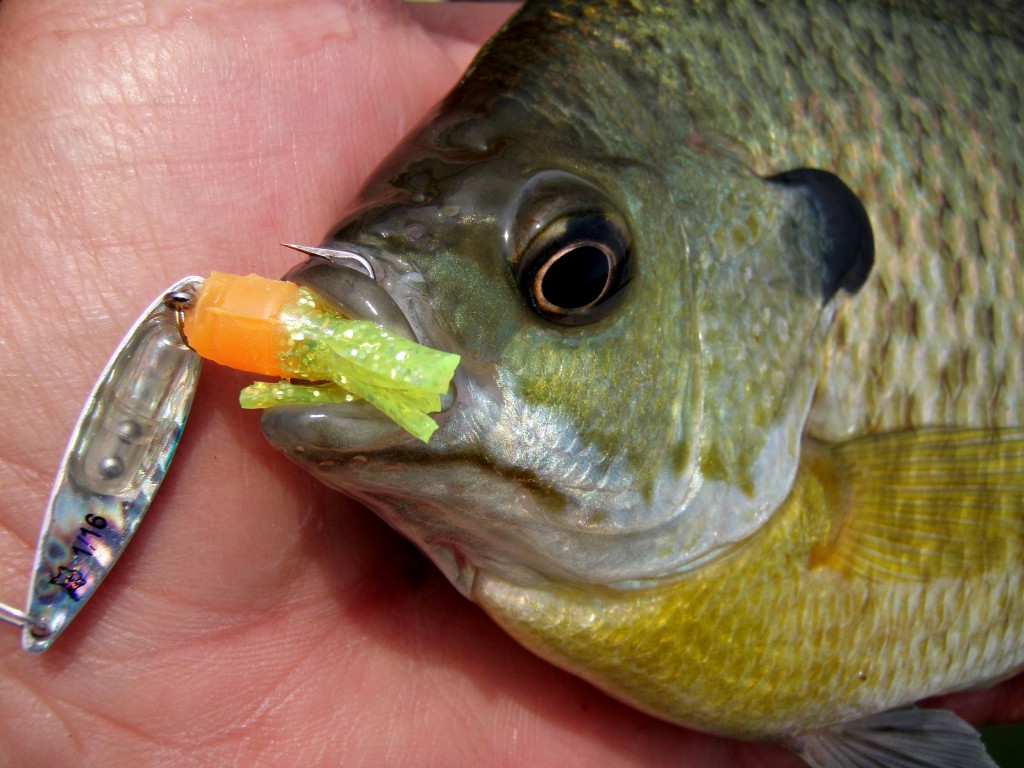
Spoon Types
Today’s spoon manufacturers offer an array of spoons that are suitable for panfish, and are also available in a variety of patterns and sizes to accommodate water depth ranges from as shallow as 3ft, to as deep as 35 ft. All spoons are not created equal; some spoons acquire their distinct wobble and fluttering abilities thru a concave/convex design, whereas other spoons achieve similar attributes by using a tapered bevel. This innovative design and science that was invented decades ago, is still highly productive today. Most anglers have experienced a spoon in some way, shape, or form, whether it be trolling, jigging, or casting. The vertical and horizontal presentation options a spoon offers are truly unique within its design…..the latter will be covered here.
When presented horizontally, each different spoon type will exhibit its own unique kind of swimming action and drop rate. Choosing the right spoon to target fish in specific depth ranges, that coincide with seasonal fish locations is the rule. I’d like to focus on a few of the most productive spoons I’ve encountered over the last several years. Bay de Noc’s Swedish Pimple in the 1/10th, 1/5th, and 1/4 oz sizes. Due to their size availability and slender design, this style of spoon has been the most effective spoon in the deepest of water holding panfish. The 1/12th and 1/8th oz Acme Kastmaster spoons. Because of this lures overall size and drop rate, it has proven to be an ideal choice when panfish are suspending in the water column over deep water. When surface temperatures reach 55 degrees and above, these spoon types really shine. But during cold water periods (45-52 degrees), the spoon of choice would be the Blue Fox flash rattlin’ spoon in the 1/16th and 1/8th oz sizes. This spoon design has a larger profile which utilizes the added buoyancy of a 2 bead rattle chamber and is also available in a number of attractive glow and holographic patterns.
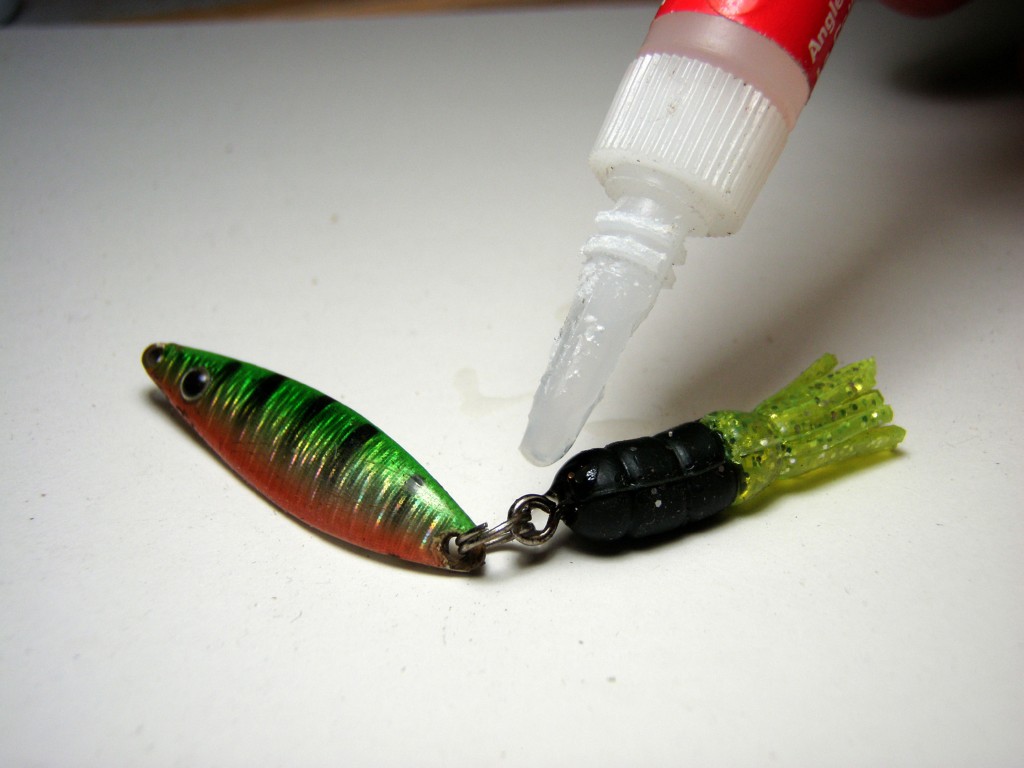
The Delivery System
7-8′ Medium light graphite rods, and wide spool or long cast reels work very well for this method of horizontal presentation. The 7’6″ HML series rods from Cabelas, coupled with Pfluegers Supreme 8035MG reels have been favorites of mine over the years, and are spooled with Berkley’s Fireline Crystal in 1lb dia./4lb and 2lb dia./6lb tests. Braided line is a critical component to this package, the sensitivity and no-stretch qualities of braided line in this scenario are key when it comes to bite detection and positive hook sets when working deep within the water column. A small barrel swivel and an 18-24″ Florocarbon leader of equivalent test, along with a small cross lock snap at the spoon connection completes this rigging. Most spoons are factory rigged, packaged with a treble hook, and are quite appropriate when fished vertically, however single hooks are ideal in this situation, and are used to employ small plastic tubes, grubs, and in some cases live bait. Some but not all manufacturers include an additional single hook with their product. When faced with installing or replacing single hooks, be sure to attach the hook thru the split ring so that the hook point rides up. Mustad’s Oshaugnessy Sproat hook, and Eagle Claws L210 in the #8 and #6 size offers a slightly enlarged hook eye to accommodate split rings, and are good alternatives for spoons unequipped with single hooks. Split rings are a part of every spoon package and are primarily used at the line and hook connection ends of the spoon. Although rare, line fouling can occur when using a line connection split ring. To prevent this, I omit the use of the top split ring and favor the use of a small cross lock snap. This also makes for quick spoon changes when exploring different depths, and experimenting with multiple color patterns.
Flappers…those little plastic colored attractors that are provided with some spoons have their place. More often than not, these attractors are rigged on the bottom riding side of the spoon (bevelled or convex side of spoon). In vertical applications of the spoon, this placement is correct. However, when applying the spoon in a horizontal presentation, attractors should be placed on the top riding side of the spoon (flat or concave side of spoon)…this rigging affects the swimming qualities of the spoon and is equally as important as the process of swaping out the treble hook for the single hook. The single hook point should always ride up. This specific spoon application is not weedless, but when used in the presence of healthy green weeds, it could be considered as weed friendly.
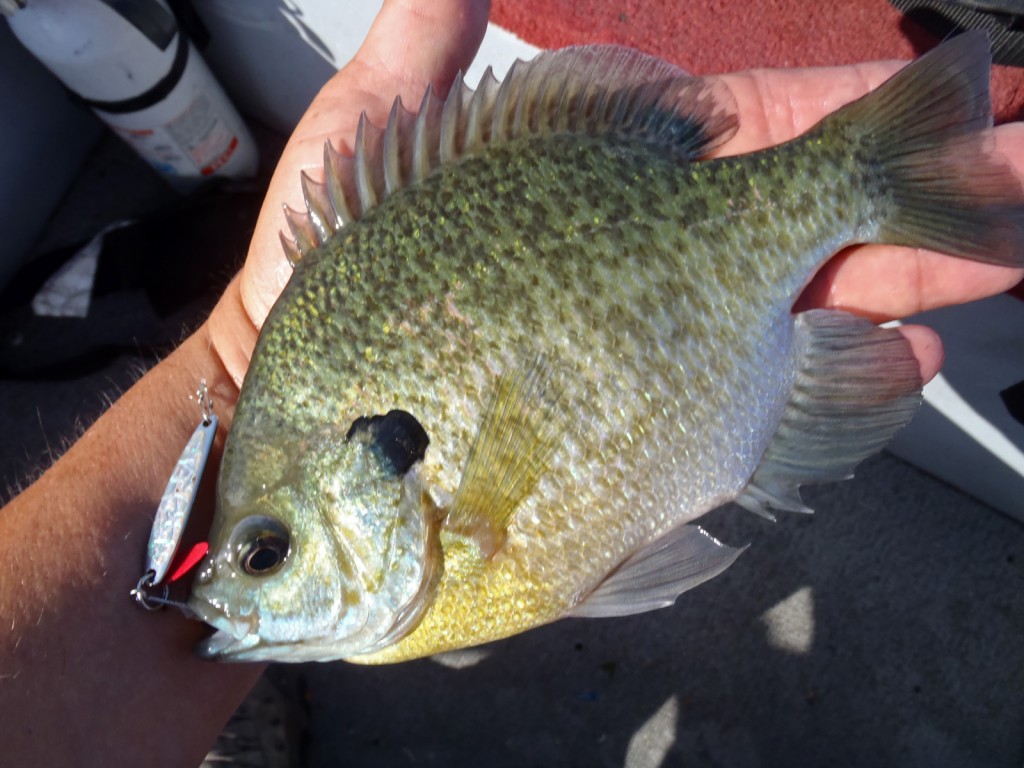
Presentation and tipping
Spoons cover lots of water and are great search tools when presented horizontally. Long casts are optimal when using this system, and are essential to contacting fish that are suspending or are positioned near the bottom in deep water. Many natural lakes of the Midwest have been impacted by the invasion of zebra mussels. The enhanced water clarity and light penetration caused by the constant filtering of these mussels has allowed deeper than normal weedlines to exist and over the years has pushed fish significantly deeper. When targeting fish in deep water, spoon choice is paramount. Spoon sizes of 1/5 to 1/4 oz can offer depth control in water from 25-35ft when presented on 1lb diameter braids. And although even deeper, catchable fish have been contacted using this method, they are not targeted due to their un-releasable status when taken from such depths. When fishing suspended fish, after the cast, allow the lure to drop on a tight line while counting the lure down. Strikes will often occur on the drop, ultimately revealing the depth and location of suspended fish. November 2nd 2008, colleagues and I were anchored well off of a deep weed edge in 19 feet of water on a large clear natural lake in Southeastern Wisconsin. Surface temperatures were in the low 50′s and the sonar had confirmed the presence of suspended fish at different depths. Casting into 17 ft, our 1/16-1/8 oz spoons barely fell to a seven count before being attacked by smaller panfish. Discipline and patience was required to allow the spoon to fall through the top layer of small active fish while ignoring initial strikes until the spoon reached a twelve count, where dozens of large bluegills were positioned. Shallow, slightly stained dishpan lakes with a maximum depth of 15 feet or less offer some of the best early season spoon fishing options. Pre-spawn panfish seeking warmer water invade the shallows and eagerly accept horizontal spoon presentations in 3-8 feet of water. This requires the use of the smaller and lighter spoons. Shorelines that are affected by wind are home to warmer surface temps early in the season, and become even more productive when a little wood or cover is present. Consecutive days of consistent wind can concentrate panfish in these areas and become prime targets for spoon fishing. Earlier this year in mid March, my partners and I contacted more than 1,000 shallow, shoreline oriented panfish within the first 5 weeks of open water, with surface temperatures that ranged from 47-54 degrees while using 1/10th, 1/12th, and 1/16th oz spoons.
The cadence of this retrieve in most water columns is the same, once the lure has reached the bottom or level of suspension, twitch or snap the spoon and begin a slow swimming retrieve with frequent pauses, or a fluttering
back of the spoon followed by a twitch or snap of the lure to continue the presentation.
This pause and fluttering back of the spoon is the absolute trigger that causes most bites to occur. Short bites
will happen with this presentation but most interested parties almost always come back.
Variations to this retrieve are worthy of experimentaion especially when working shallow areas near cover and
newly emerging weed growth.
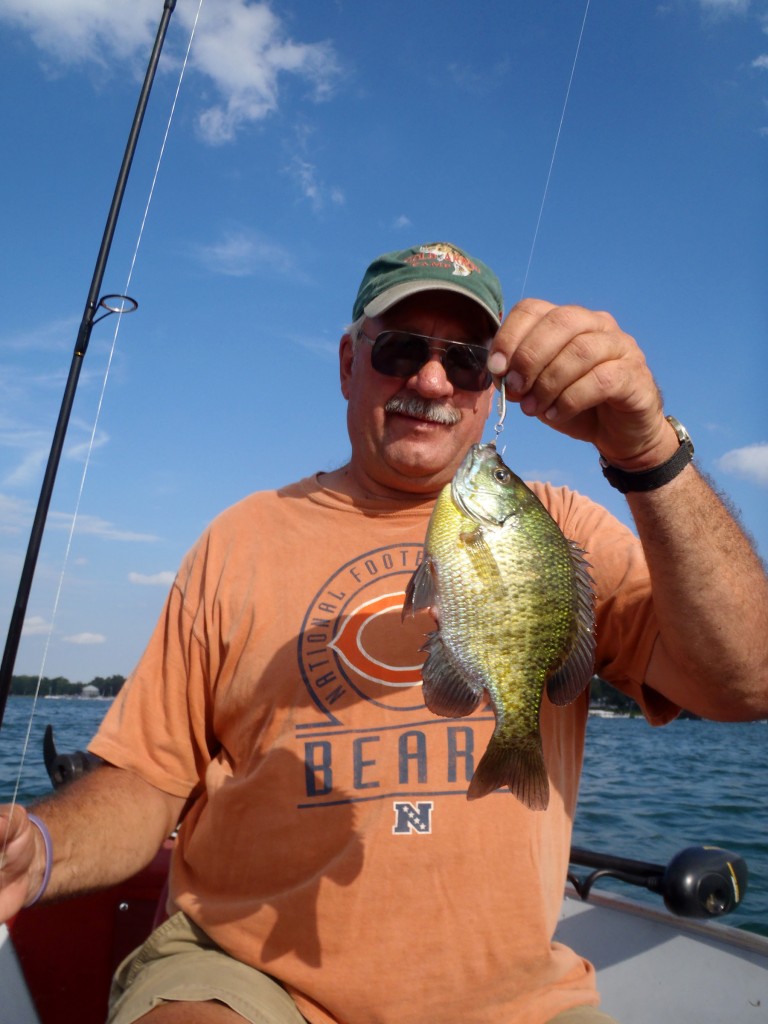
My approach to deep, late summer fish involves a series of defined controlled drifts…keep in mind we are casting, or chucking the spoon, and because we are targeting the deepest fish, I allow the spoon to free fall to within 10 ft of bottom before engaging the reel and starting the retrieve. Deep water presentations involve patience
and dedication when panfish are positioned near the bottom and spread out over deep flats.
Targeting these fish can be challenging as well as rewarding. Long down wind casts while using light braided line can typically yield 30-40 yrd casts when probing deep expanses of water with 1/4 oz spoons. Control at depths to 35ft can only be achieved with the lightest diameter braids. With more than 100 ft of line out, these lines are capable of telegraphing the lightest tap, in the deepest of water and are crucial to implementing this methodology in the abyss.
Tweaking a spoons drop rate may be necessary in order to trigger neutral to inactive fish that are suspending within the water column, and can be easily achieved by changing the size of the tipping. Small panfish tubes are my favorite for tipping spoons. Berkley’s 1″ power bait panfish tubes and Bass Pro Shops 1 1/2″ Squirmin’ squirts displace a fair amount of water when rigged on spoons, and produce a slower drop rate without sacrificing the swimming action of the spoon. Southern Pro’s Lit’l Hustler crappie tubes are also extremely effective when tipping spoons, as this tiny 1″ tube bait is a perfect fit for the 1/10 to 1/5 oz models. Venom lures also makes an extremely durable 1 1/2″ solid bodied crappie tube bait thats hard to beat once the skirt has been trimmed back. Gluing these trailers in place will prevent frequent skirt adjustments during an aggressive bite, and will dramatically lengthen the life of the tube. I anchor these plastics to the hook with the use of Berkley’s angler?s super glue.
Deep, clear bodies of water typically involve the use of live bait tipping. Crawler chunks, redworms, waxworms, spikes, and Berkley’s Gulp maggots, all work well when skewered onto the single hook. When tipping with live bait, remove tube and devote the entire hook to live bait. Combining tubes and live baits in this scenario will severely unbalance the lure, impart its swimming and fluttering action, and ultimately render the spoon into a lifeless chunk of metal. Always use live bait as a replacement for plastics, rather than an addition too.
Spoon enthusiast Doug Rorer of Stillwater, MN used his fly tying skills to customize a series of spoon flies using the Mustad Sproat hook, and the Swedish Pimple spoon. The prototypes I tested worked amazingly well and unquestionably offer another avenue to effective baitless spoon rigging.
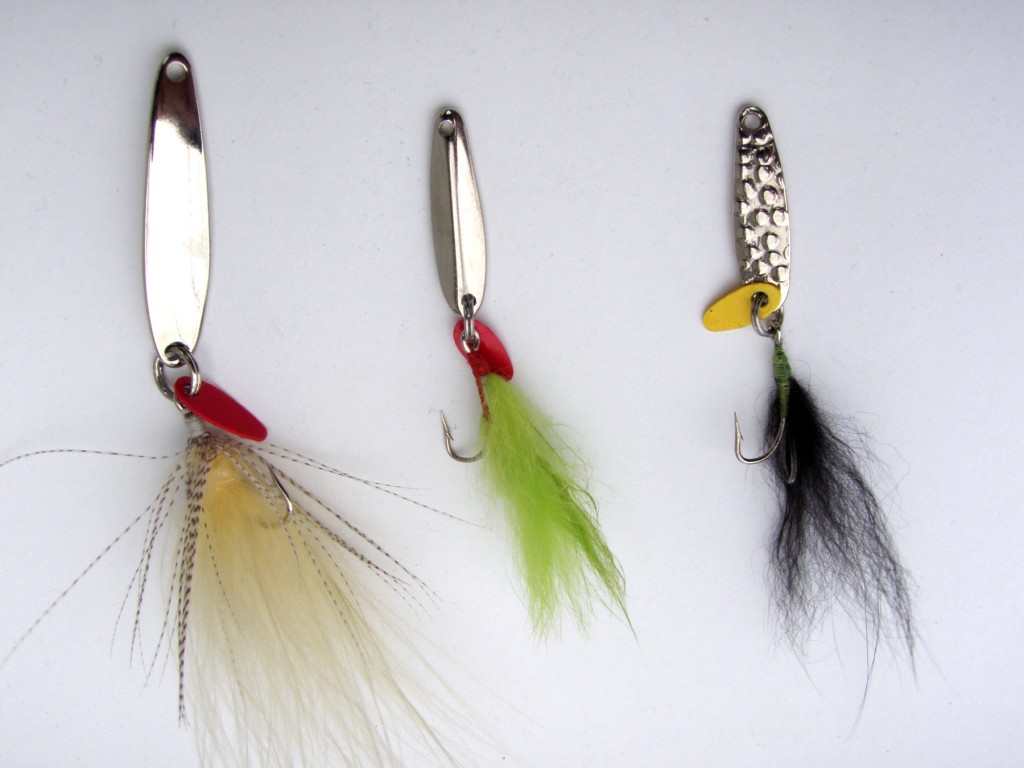
The big bite, and why it works
Compared to the finesse approach that many anglers pursue when targeting bluegills and other panfish, this horizontal spoon presentation may be considered by many as the other end of the spectrum. This loud, large, and aggressive presentation triggers the same fish that finesse anglers target with ultra-light equipment and microscopic jigs.
Big Bluegills seem to have an undying love for injured minnows and the lures that resemble them. Fish that are attracted to this lure do not “mouth” the bait; they simply attack and engulf it. These spoons are definitely a large package and should in no way be considered “small offerings” as the 1/10 oz model fully rigged measures in at 2″, and the 1/4 oz spoon hits the tape at more than 3″. Because of the spoons unusually large profile, incidental catches of bass, pike, and walleye are quite common when using this system. Since discovering the horizontal triggering qualities of this presentation, it now makes up 97% of my tactical approach when panfishing.
After working this system with great success for several years on countless bodies of water, it is apparent that this presentation triggers reaction strikes from active, neutral, and even inactive fish. Some of the strikes I’ve encountered using spoons have been subtle, but most are violent and quite vicious. Choosing the right spoon for the situation at hand is key. From March thru November in the mid-west, spoons have been proven to be top producers.
